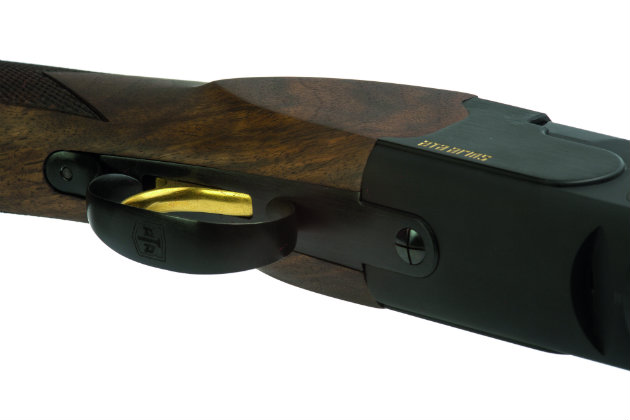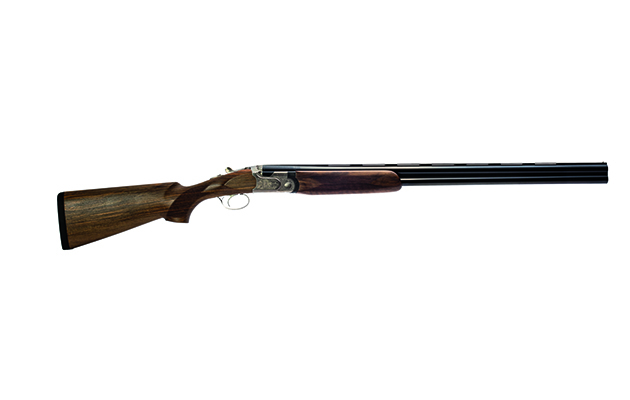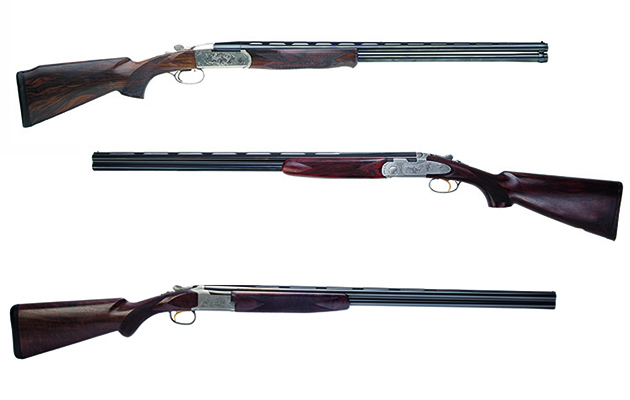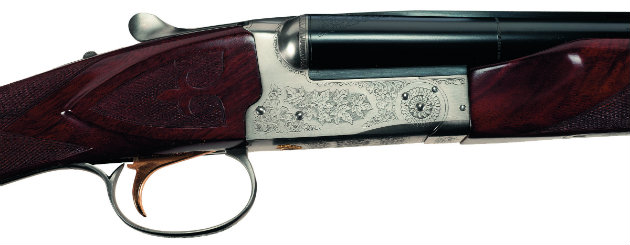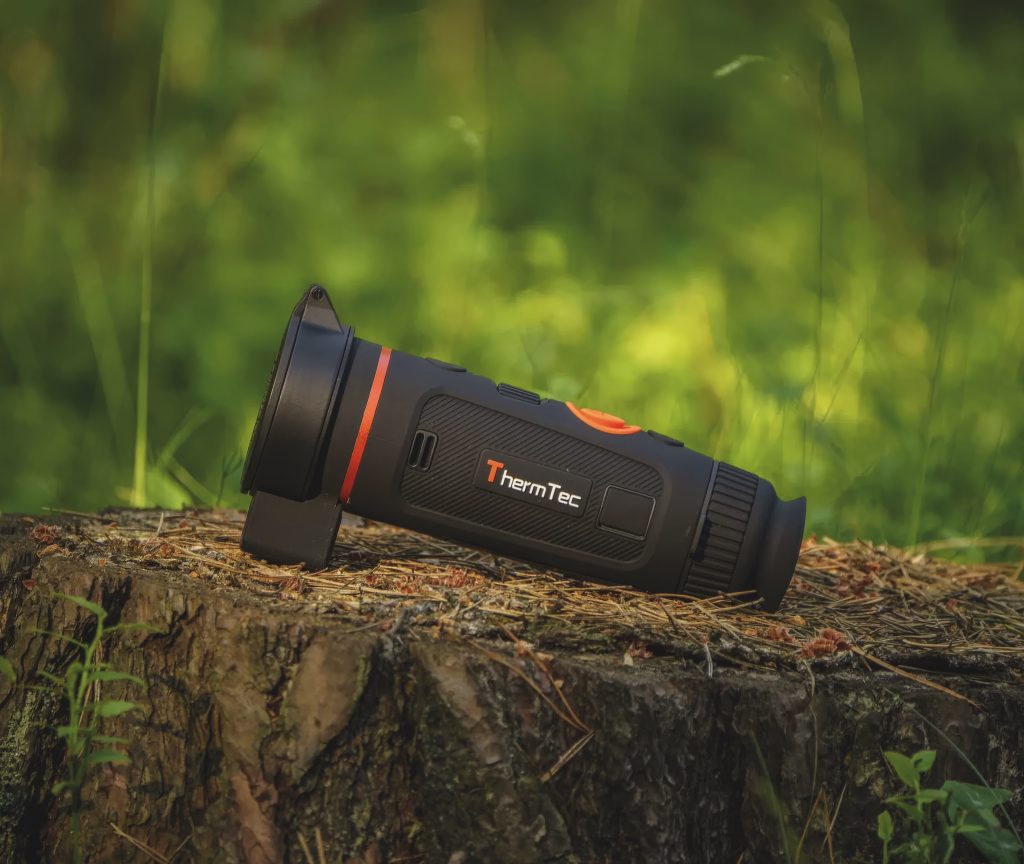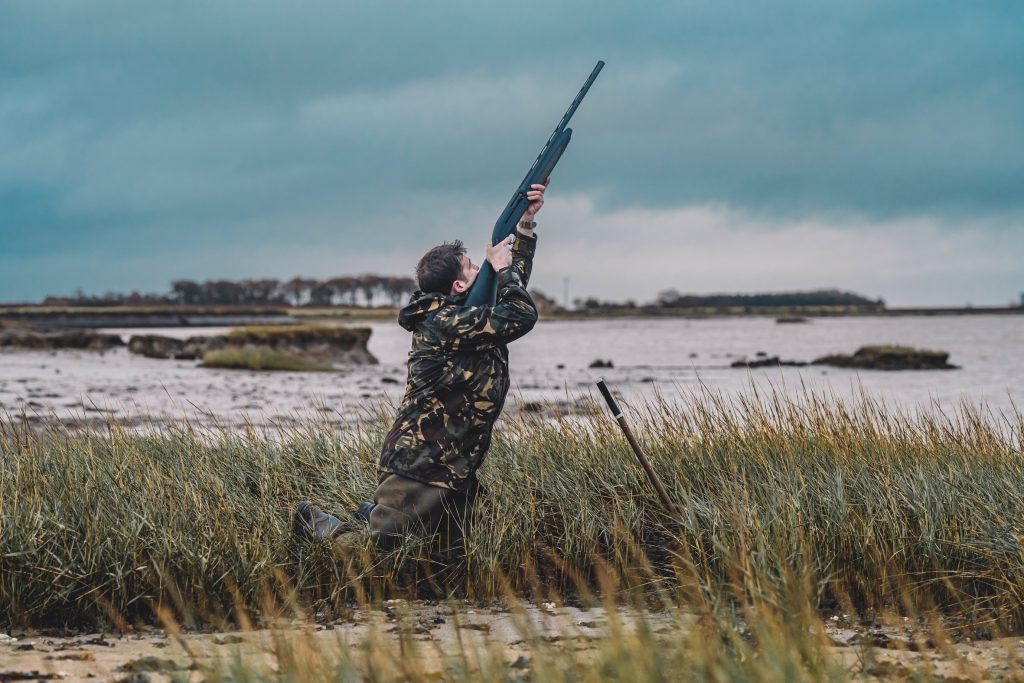This selection of second-hand over-and-under Sporters can be found on the second-hard market from £600. Bettinsoli X-Trail Sporter Target Price £600…
Win CENS ProFlex DX5 earplugs worth £1,149 – enter here
Three second-hand game guns worth looking at
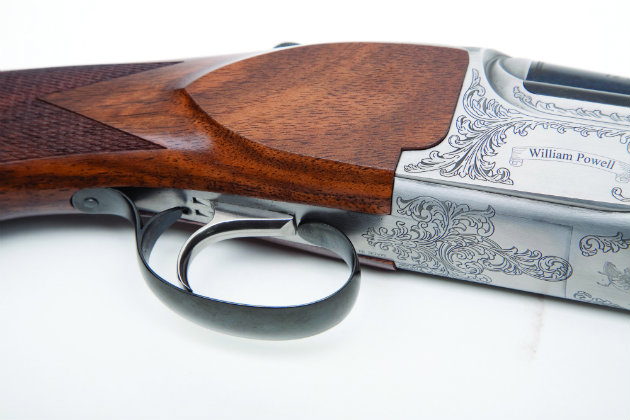
ATA Arms Lightweight Field
The late and much respected shooting writer Gough Thomas expressed the opinion that the ideal weight for a game gun to shoot 1oz of shot was 6lb, while 6lb 6oz was right for 1 1/16oz loads.
The book in question – Shotguns & Cartridges for game and clays – was first published in the 1960s, so it is interesting to note that in the 21st century most O/U game guns tip the scales at more than 7lb, and an average seems to be around the 7¼lb mark.
By Gough’s standards, however, the ATA Arms Lightweight Field is a good compromise as far as weight is concerned. It weighs around 6lb 4½oz, a weight achieved by the use of aluminium for the action body, with a steel insert around the firing pin holes.
And, although Gough is, to me, always associated with hand-built English guns, I think he would have had a sneaking regard for a well-built imported gun which sells, new, at just short of £850.
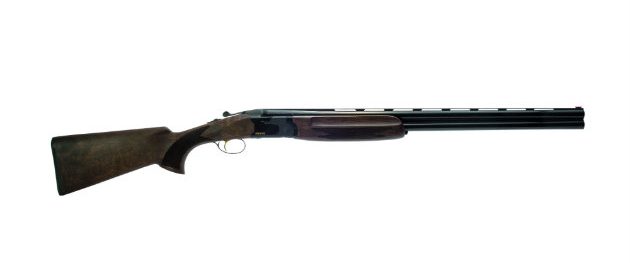
ATA Arms Lightweight Field
The gun is built in Turkey by ATA, a company which has been in business since the 1950s, although, like other Turkish companies, it has only been known to British shooters for a comparatively few years. ATA is known in its homeland for its innovations, and was among the first Turkish companies to produce O/U shotguns.
At first glance you may tend to think this gun is a Beretta, or maybe a Beretta built under licence in Turkey. That’s because it has a typical Italian-style action, and locks with the tips of a fork shaped bolt emerging through the breech face and locating with holes in the barrel shoulders. Also, the sides of the mono bloc barrel and the legs of the extractors have been given an engine-turned finish, which is not just elegant but also provides an oil-retaining finish.
Inside features, however, are not Beretta lookalikes. One point I do like is that the transfer of the single trigger to the second barrel is mechanical rather than recoil-driven, so is unlikely to give any trouble with ultra-light loads or misfires. Safety is automatic.
The exterior of the action is finished in plain black, with just the maker’s name in small gold lettering. The woodwork is a reasonable quality walnut, and wood-to-metal fit is good. Chequering is laser-cut, and stock length is 14¼inches. The fore-end has a rounded nose, and the release is an Anson-type push button.
More information: From the importer Wildhunter.
Browning B725 Field
When Browning introduced the B725 range in 2011 it had to be something special to compare with the B525 it replaced, and its predecessors. Fortunately, the Browning designers had got things right once again and Sporter models, in particular, sell well in the UK.
But there were other models in the new Browning package, and among them was the Hunter version. At 7lb 7oz it’s a bit heavy for a game gun, but it makes up this slight discrepancy with pleasant, flowing lines, plus good balance and handling.
So, what are the differences between the B725 and its predecessors? Wisely, the Browning designers stuck to the general principles dictated by John Moses Browning back in the 1920s, but they were tweaked a bit when compared to the B525.
The B725 still has the barrels hinged in a full-width cross pin, two-piece ejectors powered by kickers attached to the fore-end iron, a low-mounted bolt engaging with a bite in a shallow barrel lump, and an action with all the features neatly stacked one on top of another.
Differences include a slightly shorter and shallower action body, a little wider at the front to allow a greater contact area between the forward lump and the cross pin, and the provision of an automatic safety to be fitted easily by a gunsmith should the owner wish.
Another innovation is a re-design of the mechanism, which transfers the single trigger to the second barrel. On the B425 it was powered by the recoil of the first barrel firing, now it is a purely mechanical action – shades of the much-lamented Winchester 101 with which the B725 shares many other features.
The slim, Prince of Wales-style pistol grip has drawn much praise from reviewers, as has the shape of the fore-end wood.
A new gun costs a little under £2,000 – but that’s for the Grade 1 version. Round about twice as much money will get you a Grade 5 with a superior finish, more elegant wood and a very pleasing engraving pattern. Therefore, a secondhand Grade 5 would be worth at least twice as much as my Grade 1 estimate.
The B725, like the majority of break-action Brownings, is made on the Miroku plant in Japan.
More information: From BWM Arms, tel 01235 514550, or visit Browning.
William Powell Perseus
Where would Italian gunmaking be without the Rizzini dynasty? By my reckoning there are at least four active companies either run or founded by Rizzini brothers and cousins, and historically their products range from the not-very-special to the excellent.
So what, you may ask, has this to do with British gunmaker William Powell, whose company has been in business since 1802? The fact is that, like several other traditional British gunmakers, it has gone to Italy for its cheaper ranges, and for this entry-level gun its maker of choice has been Battista Rizzini.
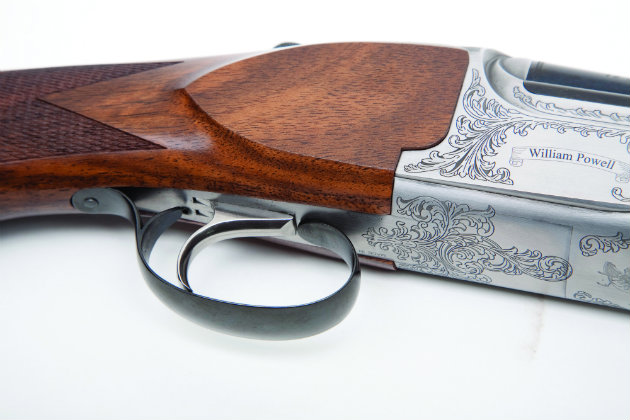
William Powell Perseus
Battista Rizzini’s company was founded in 1965, and has established a reputation for making good-quality and well-priced shotguns and double rifles, and in this case they have produced an elegant gun, which William Powell has been able to sell, new, for £1,550.
The gun, built to Powell’s specification, weighs around 7lb 10oz depending on barrel length and wood density. That’s a nice compromise weight for a gun that’s to be used for field shooting and clays. And, if there is a requirement for heavy loads, the gun has three-inch chambers and has been subjected to magnum proof.
The gun is available with 28 or 30inch barrels and it comes with five multichoke tubes, so if you’re buying second-hand do make sure all the tubes are present, together with the key.
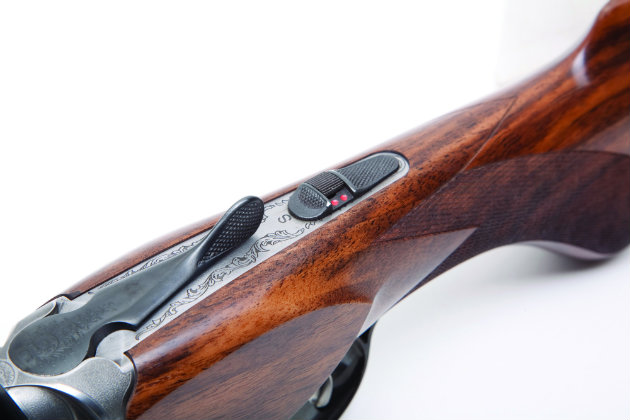
William Powell Perseus
Woodwork on the guns I’ve seen show a pleasing grain pattern, which is enhanced by an oil finish rather than varnish. Wood to metal fit is good, and the pistol grip is of the Prince of Wales-type, which gives pleasing, flowing lines. The buttplate is of wood, and stock length is 14½inches, with drops of 1 3/8in and 2¼in at comb and heel respectively.
The fore-end is of the Schnabel type, and its release takes the form of an Anson-style push button at its forward end.
In its general operating principle the gun is typically Italian, with monobloc barrels hinged on stub pins, and spring-loaded ejectors. Lock-up is achieved by a low-mounted bolt engaging with a bite in a shallow barrel lump.
The Perseus is the cheapest of Powell’s “Continental” range, which includes overand-unders selling up to £12,950, and side-by-sides up to £16,500.
Further information: From William Powell.
Second-hand 20-bore game guns
Browning B725 Hunter 20-bore, target price £1,500 A basic, Grade 1 version of the Browning B725 Hunter may weigh anything between 7lb…
Second-hand guns for gamekeepers and clayshooters
Winchester Model 23 Side-by-side classes in major sporting contests don’t seem to be as popular as they were, which is a pity…
Related Articles
Get the latest news delivered direct to your door
Subscribe to Shooting Times & Country
Discover the ultimate companion for field sports enthusiasts with Shooting Times & Country Magazine, the UK’s leading weekly publication that has been at the forefront of shooting culture since 1882. Subscribers gain access to expert tips, comprehensive gear reviews, seasonal advice and a vibrant community of like-minded shooters.
Save on shop price when you subscribe with weekly issues featuring in-depth articles on gundog training, exclusive member offers and access to the digital back issue library. A Shooting Times & Country subscription is more than a magazine, don’t just read about the countryside; immerse yourself in its most authoritative and engaging publication.






